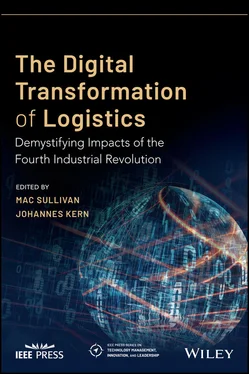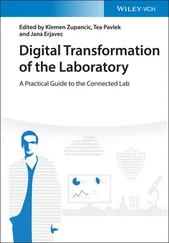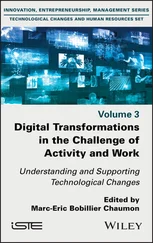1 ...8 9 10 12 13 14 ...34 Outsourced manufacturing to the emerging and developing world may have peaked in terms of manufactured goods as tariffs and nontariff barriers (NTB) threaten the effectiveness of cross‐border supply chains (Großer and Weinert 2019). If there is negative growth in the global economy, the 0.8–1.4% productivity gains from automation will decrease the polarization that has previously skewed toward low‐skill, repetitive, and rote work (Manyika et al. 2017). Companies have to utilize their assets, internal capabilities, and cash to “transform their core businesses” in hopes of producing the same outputs with a lower cost or striving to produce new revenue generators, as the adoption of new technologies and entrants of a new form of competitors is encroaching on many economic silos that had been previously untouched (Marco and Lakhani 2017).
Up until the spread of COVID‐19, shareholders had been content with positive returns and had not exerted pressure for automation as they considered the media backlash and subsequent revenue ramifications of subzero job creation. As competition grows fiercer through more transparent marketplaces in a somewhat commoditized and mature industry, potential economic constrictions loom, and increasingly nominal technical factors make automation more realistic. A combination of these factors will erode the societal and governmental protectionary boundaries that have kept workers at their current subsistence levels (Manyika et al. 2017). Low‐skill workers tend to recover fairly well after recessions; however, middle‐skill cognitive workers, like logistics clerks, tend to bounce back slower (Foote et al. 2015).
The pursuit and possibility of near‐zero marginal costs as in the freight market are driving companies to reengineer their current business processes and make them look at automation. Companies are always trying to increase productivity to reduce costs. However, until recently, economists did not think it was possible that technology could push that marginal cost of “communication, energy, and transportation, as well as many other physical goods and services” as close to zero as seen in the “emerging sharing economy” (Rifkin 2015). This is more of a reality today as the cost of automating tasks is dropping at a rapid rate with new emerging technological advancements in computing power and machine learning.
There is a shift away from outsourcing manual labor in terms of both physical and digital tasks, which still have a significant operational expense, toward the capital expenditure of investing in automation. This is looking more appealing as labor costs go up and talent shortages of skilled workers continue to plague R&D leading countries like the United States and China. Logistics company leaders, as representatives of businesses leaders, will be at the forefront of technological change and will be able to take advantage of the efficiency gains offered by technology; however, they must focus on rethinking their business to see how automation can work alongside their workforce rather than think in terms of simply automating tasks using legacy processes (Bughin et al. 2016). See more on this topic in the RPA chapter by Sullivan, Simpson, and Wesley Li, Chapter 5.
Winners and Losers of a Digital Transformation
Utilizing robotic process optimization, upgrading to a cloud server, or setting up a customer‐facing API may sound like great first steps along this journey. However, whether a company decides to use an outside consultant or drive this initiative from within their organization, there can be substantial roadblocks that hinder the digital transformation. The potential benefits of better technology must be weighed against its costs, including not only the cost of obtaining the technology but also the costs of learning how to use it and integrating it with other technologies already in use. There is also the risk of rushing into a new technology and having a more efficient technology come out just after that makes the investment that the company just made obsolete. Technological change will help some workers do their job more efficiently but potentially put others out of a job. In the end, it will be the market, profitability, and economic efficiency that have the final say on what technology will be used and how (Mokyr 1996).
The Necessity of Economies of Scale
Having a strong in‐house IT team coupled with a CIO would certainly help companies along this path, as would a contract with a top‐tier consulting firm. However perhaps the thing that will help companies the most is a clear written understanding of their global processes and procedures. Having a roadmap of processes helps to lead the way to be able to identify where commonly occurring tasks happen and facilitate a smooth transition to improving internal mechanisms. This has been traditionally not very well documented in logistics as much of the process has relied on email communication. Companies with business processes that necessitate a significant amount of person‐to‐person communication have held on to their legacy communication mechanisms because their stakeholders valued it and there was not a more or “equally efficient digital alternative” (McAfee and Brynjolfsson 2017). Logistics, which is representative of the B2B service industry, fits this description well. Even container ship operators, multibillion‐dollar juggernauts who went through their evolution as they adopted the use of the standardized container in the 1960s and 1970s, are struggling to upgrade their communication methods (Tipping and Kauschke 2016). To learn about how China is using its Belt and Road Initiative to lift its trading partners, see Wheeler's chapter on the Digital Silk Road.
While companies like Maersk have set up shared service centers in developing countries, the adoption of cutting‐edge processes is staggeringly slow as can be seen by response times and incorrect invoicing still plaguing the industry. Processing hundreds of thousands or more of virtually identical transactions that had traditionally been handled, monitored, or audited by a human worker has been the best use case so far for process automation and implemented across the banking, insurance, telecommunication, and travel industries. This perfectly applies to logistics and transportation companies whose operations are at high risk of automation (Bughin et al. 2016). Chasing the top line has been long integrated into the mindset of logistics companies who are consistently looking for the next target customer to improve organizational health instead of looking toward process improvement.
Foundations of a Digital Transformation
Prioritization of Technology Exploration
Logistics companies must adapt and proactively look for ways to use technology to reinvent themselves (Tipping and Kauschke 2016). Consistently, logistics companies have been looking outward to new investments in assets or new client acquisition instead of building technological prowess in‐house that would help to best prepare for a digital transformation. Unlike finance or manufacturing companies, commercially focused individuals who spend a large part of their time selling and catering toward their tier‐one customer lead most logistics companies.
In addition to the financial and time constraints, companies are faced with an overload of exciting new technologies that they should or are being encouraged to evaluate. Logistics companies could invest in capturing data through IoT devices; developing sophisticated self‐learning algorithms based on multilayer regressions to create some form of machine learning AI; eliminating emails, faxes, and spreadsheets by capturing data via new forms of ecosystems using blockchain or optical character recognition (OCR) technology; rolling out digital handshakes in the form of electronic data interchange (EDI); or allowing systems to communicate better with each other through application programming interfaces (APIs). They could even outsource their data management, integration, and software development. These are the conversations that have happened in board rooms of leading logistics companies around the world as they scramble to come up with a technology investment plan.
Читать дальше












